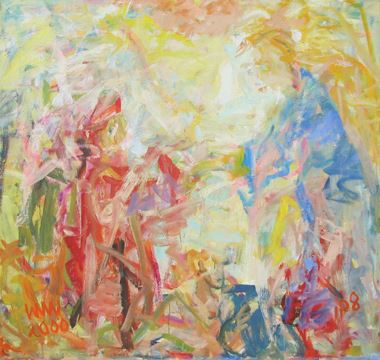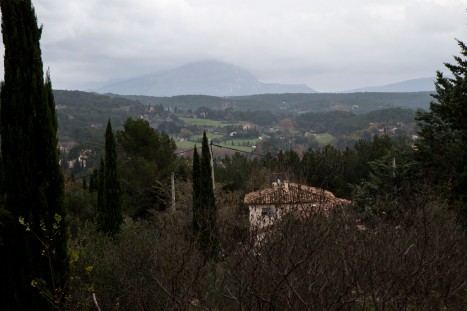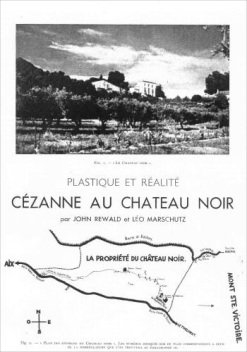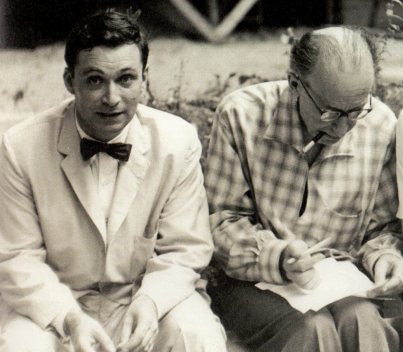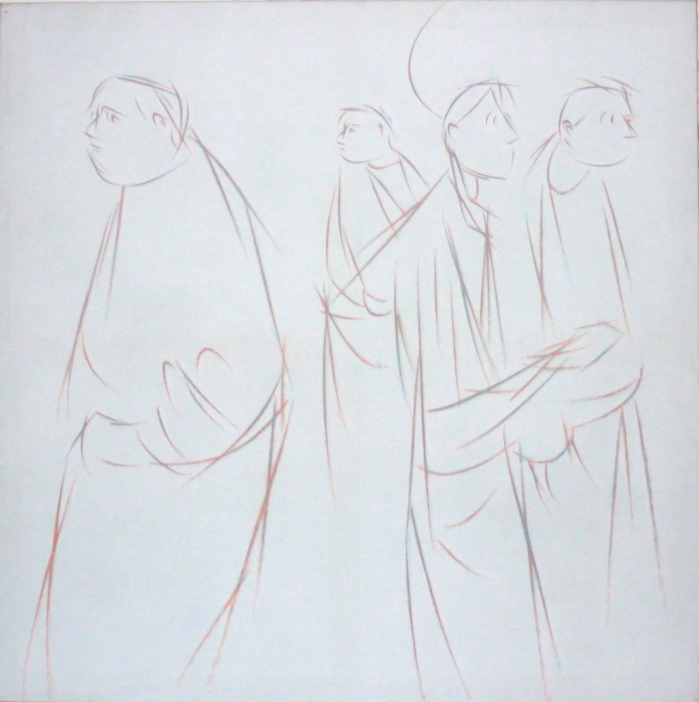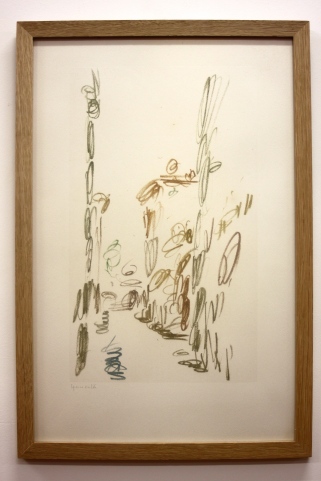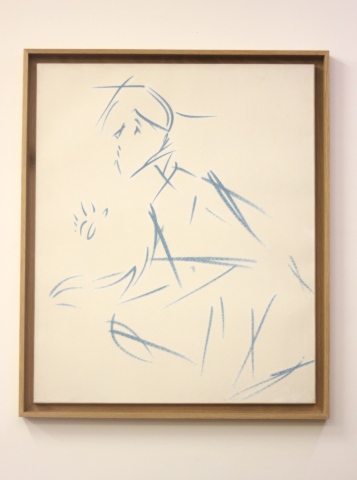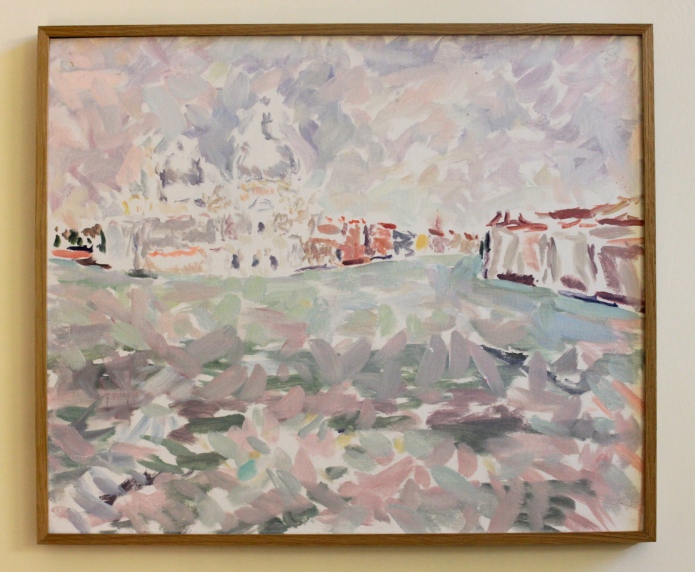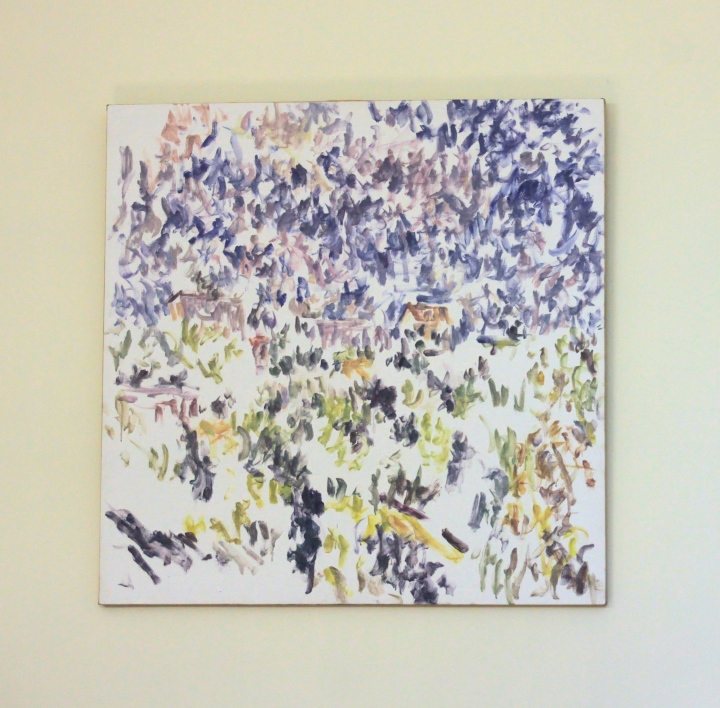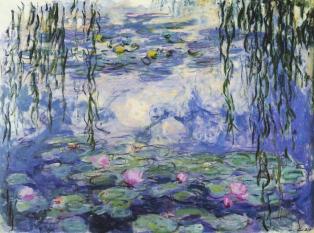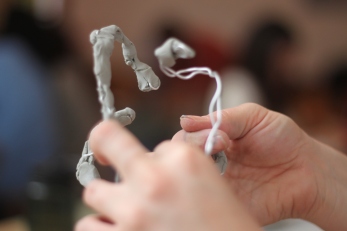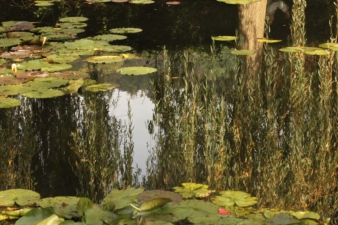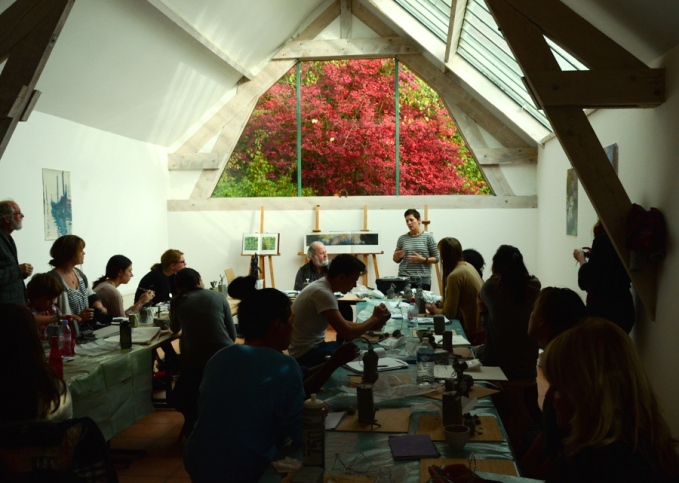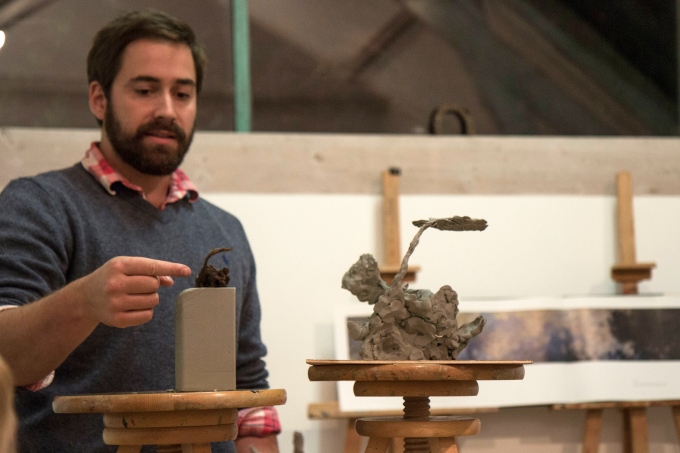At top: William Weyman, pictured at center, with Samuel Bjorklund and Leo Marchutz. At bottom: William Weyman, pictured to the right of Sam (left) and to the left of Sam (right)
Around Marchutz, we often hear the names “Sam and Billy,” the school’s co-founders, uttered with an affection and deep respect that a certain sort of devoted teacher can impress upon his students. Owing partly to the fact that we know the type well, it saddened us all to learn that William “Billy” Weyman passed away on Friday.
I regret that I never met Billy, and for that his friends and family will have to fill in the gaps with a richer portrait threaded with vivid memories and, to quote Dante, bound by love. No second-hand account could do a person that justice. He was a brilliant artist, a beloved professor, husband, father and friend, and the chief architect of the Marchutz School’s curriculum, an accomplishment whose magnitude we hope will only grow in the years to come.
To honor his life, we share with you two short excerpts from his memoir, published two years ago. In it he recalls his first years in Aix-en-Provence where he made acquaintance with the master who would become his mentor, Leo Marchutz.
* * *
“I was led somewhat innocently into Leo’s life, and also into Cezanne’s particular world, where his phantom spirit still pervades the countryside. How it all came to be is a labyrinthine mystery, the point being that my life was never the same once I descended the gangplank of the steamship le Flandre at le Havre in September 1961 and set foot on French soil for the first time. Without knowing it, I was headed into a life dedicated to art in many of its facets.
“A soft mistral was blowing, the sky almost lapis blue, as I walked past the light-filled Place de la Mairie and entered rue Gaston de Saporta. At number 23, I had been instructed to enter the courtyard, open the dark green door on the right, and mount four flights of stairs to the attic studio. Following these instructions, I ended up literally in the attic. The ceiling was low, and the room was lit by two bare neon tubes and a fraction of the natural light seeping in through a small window at floor level. A few empty easels were scattered arbitrarily here and there. Five or six other students milled around and chatted, probably, like me, wondering what a French art class would be like. At orientation, an art history teacher and advisor who was familiar with my transcript from Sewanee had insisted I take this course. He seemed to be in total admiration of the artist, Leo Marchutz, who would be teaching this class.
Almost as soon as I joined the chattering group, a man entered the room. I guessed him to be in his late fifties. I don’t know if I imagined it or not, but for a brief moment it seemed this makeshift studio was subtly transformed by his presence, its eerie blue-white light a bit warmer. He was slight of stature, and his head was set low on his shoulders. He was not a handsom man, but rather one who emitted another kind of attraction, which was unmistakeably revealed by an inner light that shone through his greenish eyes.
He seemed to be meditating on what he would say to us. Then, from his blue checkered shirt he produced a pouch from which he withdrew tobacco and fit it carefully in a chrome box. A thin sheet of rolling paper, which he moistened with his tongue, was put into place. He snapped the box shut, and a perfectly rolled cigarette fell softly into his hand. This ritual took about three minutes. His fitting the cigarette into a black and silver holder and lighting it completed what seemed a contemplative experience, giving him the inner space to know precisely what he would say to us, and, God, it was precise.
“I suggest that you begin by doing some ‘caupys.'”
“In this first impression of Leo, I detected one side of him that proved to be true, a side which, over the years, he often admitted: his timidity. What I failed to perceive, for it could only be revealed gradually in close contact with him, was that underneath that apparent shyness, there was genius. He looked at paintings and sculpture of history not only with an unblemished eye, but with a sharp mind and a pure heart.”
Above: a young Billy Weyman, pictured at right, with friends in Aix-en-Provence.
* * *
Today, Billy’s final reflection upon the life and death of his own mentor is especially poignant:
“Memory is powerful and reminds us that, as T.S. Eliot said, “the past is not only the past, it is present; it lives.” Wherever he is, Leo lives not only in my mind but in the minds of all who knew and loved him. There is no measure for how much he influenced and altered the direction of our lives.
In this, my personal memory of the man, the form and the meaning become clear enough…All that he touched on paper or canvas was religious art, regardless of subject matter, for it was all conditioned by love, or light, love’s corresponding visual metaphor in the work of art.”
Above: Beatrice welcoming Dante into Heaven by William Weyman
Like the artist and mentor that he admired so dearly, Billy Weyman changed many lives, including mine, for the better. On behalf of the Marchutz School and Alumni Fellows, I express condolences to all of his family, friends and colleges. To see his art, we encourage you to visit the website of Daedalus Gallery that Billy ran with his wife, Jacqueline, in Savannah, Georgia.
– Kate Butler




